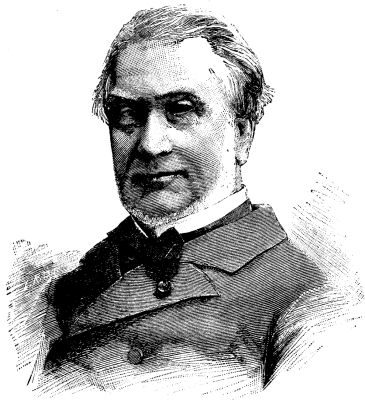M. Dupuy De LomeM. Dupuy De Lome died on the 1st Feb., 1885, at the age of 68. It may
be questioned whether any constructor has ever rendered greater services
to the navy of any country than those rendered by M. Dupuy to the French
Navy during the thirty years 1840-70. Since the fall of the Empire his
connection with the naval service has been terminated, but his
professional and scientific standing has been fully maintained, and his
energies have found scope in the conduct of the great and growing business
of the Forges et Chantiers Company. In him France has undoubtedly lost her
greatest naval architect. When the young constructor settled down to his work in the arsenal at Toulon, on his return from England, the only armed steamships in the French Navy were propelled by paddle-wheels, and there was great opposition to the introduction of steam power into line-of-battle ships. The paddle-wheel was seen to be unsuited to such large fighting vessels, and there was no confidence in the screw; while the great majority of naval officers in France, as well as in England, were averse to any decrease in sail spread. M. Dupuy had carefully studied the details of the Great Britain, which he had seen building at Bristol, and was convinced that full steam power should be given to line-of-battle ships. He grasped and held fast to this fundamental idea; and as early as the year 1845 he addressed a remarkable report to the Minister of Marine, suggesting the construction of a full-powered screw frigate, to be built with an iron hull, and protected by a belt of armor formed by several thicknesses of iron plating. This report alone would justify his claim to be considered the leading naval architect of that time; it did not bear fruit fully for some years, but its recommendations were ultimately realized.
M. Dupuy did not stand alone in the feeling that radical changes in the
construction and propulsion of ships were imminent. His colleagues in the
"Genie Maritime" were impressed with the same idea: and in England, about
this date, the earliest screw liners—the wonderful converted "block
ships"—were ordered. This action on our part decided the French also to
begin the conversion of their sailing line-of-battle ships into vessels
with auxiliary steam power. But M. Dupuy conceived and carried out the
bolder scheme of designing a full-powered screw liner, and in 1847 the
Napoleon was ordered. Her success made the steam reconstruction of the
fleets of the world a necessity. She was launched in 1850, tried in 1852,
and attained a speed of nearly 14 knots an hour. During the Crimean War
her performances attracted great attention, and the type she represented
was largely increased in numbers. She was about 240 ft. in length, 55 ft.
in breadth, and of 5,000 tons displacement, with two gun decks. In her
design boldness and prudence were well combined. The good qualities of the
sailing line-of-battle ships which had been secured by the genius of Sané
and his colleagues were maintained; while the new conditions involved in
the introduction of steam power and large coal supply were thoroughly
fulfilled. The steam reconstruction had scarcely attained its full swing
when the ironclad reconstructor became imperative. Here again M. Dupuy
occupied a distinguished position, and realized his scheme of 1845 with
certain modifications. His eminent services led to his appointment in 1857
to the highest office in the Constructive Corps—Directeur du Materiel—and
his design for the earliest seagoing ironclad, La Gloire, was approved in
the same year. Once started, the French pressed on the construction of
their ironclads with all haste, and in the autumn of 1863 they had at sea
a squadron of five ironclads, not including in this list La Gloire. It is
unnecessary to trace further the progress of the race for maritime
supremacy; but to the energy and great ability of M. Dupuy de Lome must be
largely attributed the fact that France took, and for a long time kept,
such a lead of us in ironclads. In the design of La Gloire, as is well
known, he again followed the principle of utilizing known forms and
dimensions as far as was consistent with modern conditions, and the
Napoleon was nearly reproduced in La Gloire so far as under-water shape
was concerned, but with one gun deck instead of two, and with a completely
protected battery. So long as he retained office, M. Dupuy consistently
adhered to this principle; but he at the same time showed himself ready to
consider how best to meet the constantly growing demands for thicker
armor, heavier guns, and higher speeds. It is singular, however,
especially when his early enthusiasm for iron ships is remembered, to find
how small a proportion of the ships added to the French Navy during his
occupancy of office were built of anything but wood. Source: Scientific American Supplement, No. 481, March 21, 1885
|
Copyright, 2005-2010 by Webified Development all rights reserved. | |||||||

